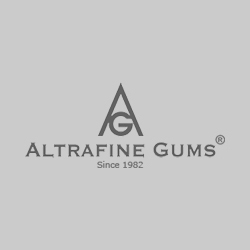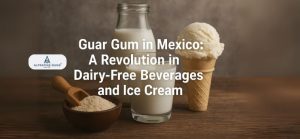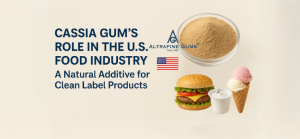
Why Manufacturers are Shifting to Fenugreek from other Hydrocolloids?
The fenugreek seed has the galactomannan content ranging between 35- 50 % of the total weight of the seed. The main chemicals in the seed include the galactomannans, steroidal sapogennins and isoleucine.
The fenugreek is unique than the other gums in that it has a higher rate of galactose substitution with a ratio of 1:1 mannose to galactose. This makes it have a higher solubility in cold water than all other galactomannans. The polysaccharides content in the gum ranges between 60 – 80%.
The gun has a typical structure of 1→4 linked β-D-mannose backbone with a single unit of galactose side chains alpha linked at the 0-6 oxygen.
Fenugreek versus Guar Gum
The fenugreek produces lesser viscosity when compared to the Guar Gum, but exhibits high hydration rates. Thu gum has a mannose to galactose ratio of 1:1, allowing it to have a higher affinity to water, while the guar has the ratio of 1:2, and therefore lesser water affinity.
The product yields low viscosity compared to other hydrocolloids due to the low molecular weight and has lesser tendency to form molecular aggregates.
Choice of the Fenugreek over Other Hydrocolloids
The gum is very efficient at reduction of the surface tension more than any other existing gums; it also has a greater inter facial activity than any other known galactomannan.
Compared to the other hydrocolloids, it is highly efficient in decreasing this inter facial free energies. Manufacturers are therefore shifting their attention to the fenugreek to provide the much needed emulsion stability as well as increasing the viscosity.
Fenugreek in the Food Industry
When compared to others in the food industry, the gum has good concentrations of minerals such as phosphorus and sulphur. Research has also showed that curry made has high amounts of calcium, Iron and zinc. Other important nutrients contained in the fenugreek include vitamin c, Beta-carotene, thiamine, riboflavin and folic acid. They are also rich sources of dietary fiber, where 100 grams of seed can provide more than 65% of fiber.
Ongoing research has also showed that the gum has an ability to help lactating mothers to release more milk for their babies.
The importance of the fenugreek in foods can be summarized as follows.
- Sensory properties, texturization and colorization of foods
- As anti microbial agent in foods
Health Advantages
- Treatment of constipation and colon irregularities
- Nutrient requirements enhancements
- Management of diabetes symptoms
- Antioxidant activity in the body
- Lowering of cholesterol levels in the body
- Reduction of body weight and obesity
- Anti carcinogenicity effects
- Galactogogue action in the body
This serves to show why the gum is more preferred by nutritionists as compared to other forms of hydrocolloids.
Conclusion
With the increasing availability of this plant product and considerable affordability, the fenugreek is headed to becoming the preferred galactomannan among its class. Compared to other hydrocolloids such as the guar, it has lesser viscosity but higher hydration potential, which is a very important attribute in industry.





